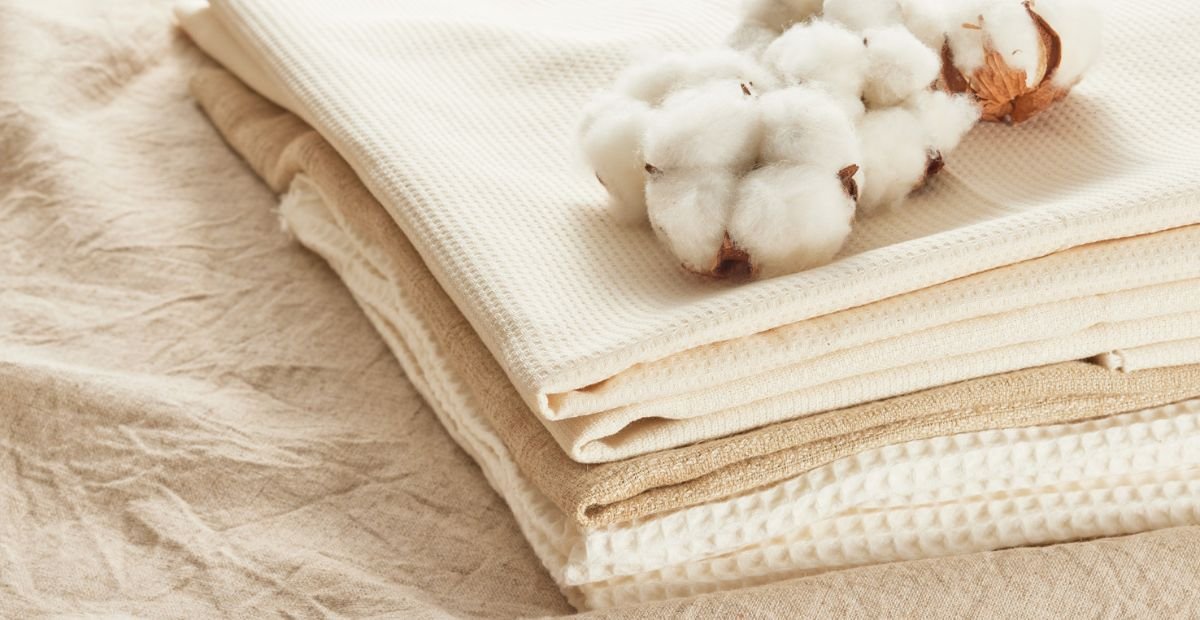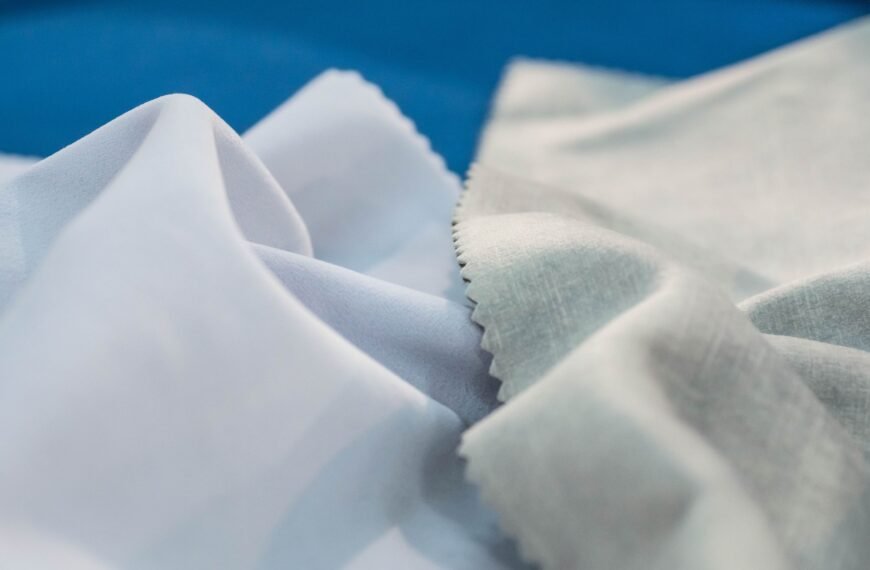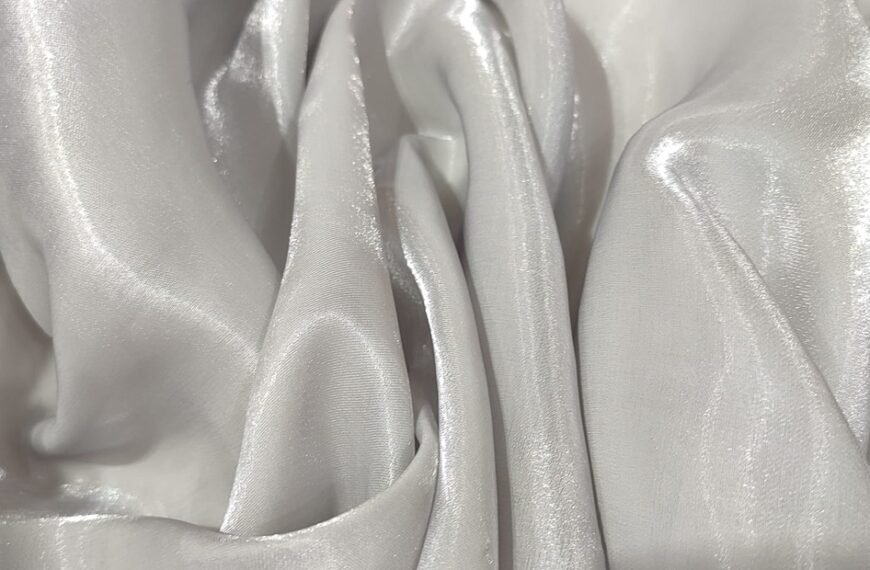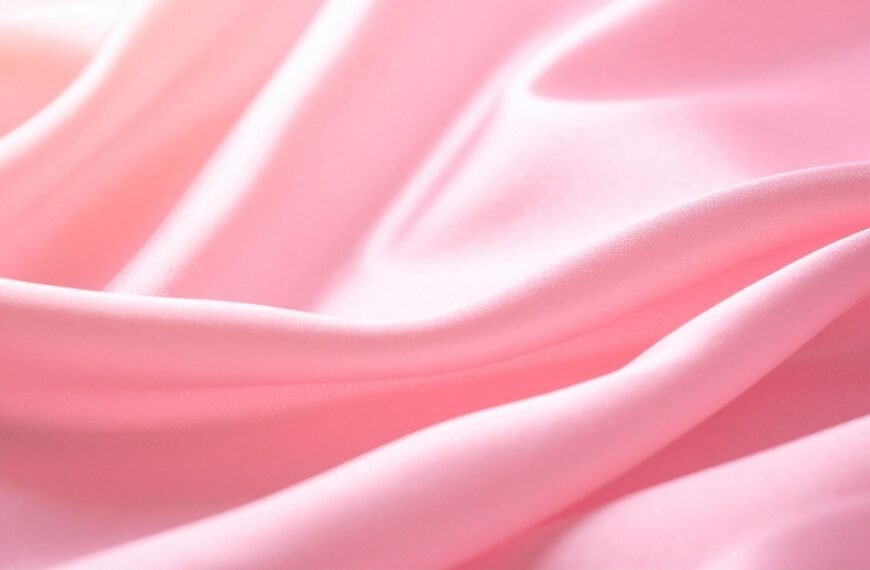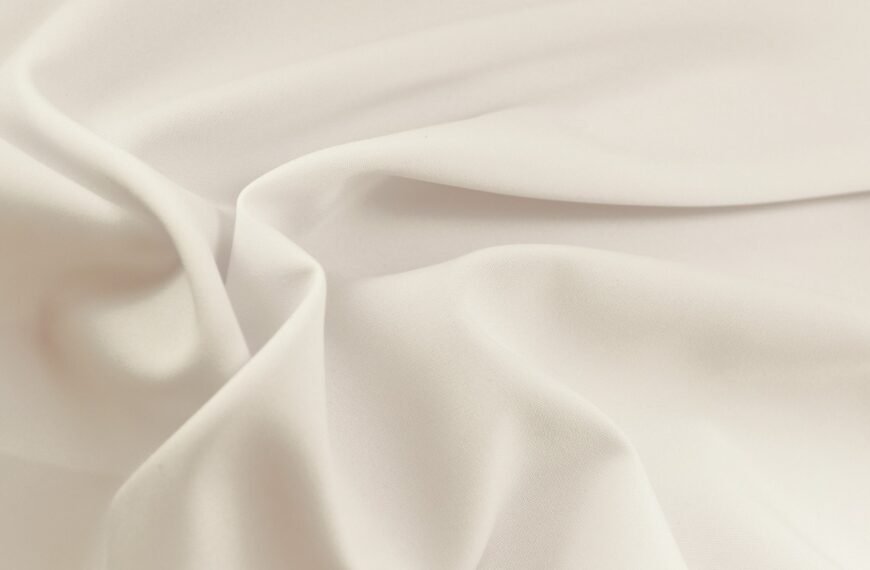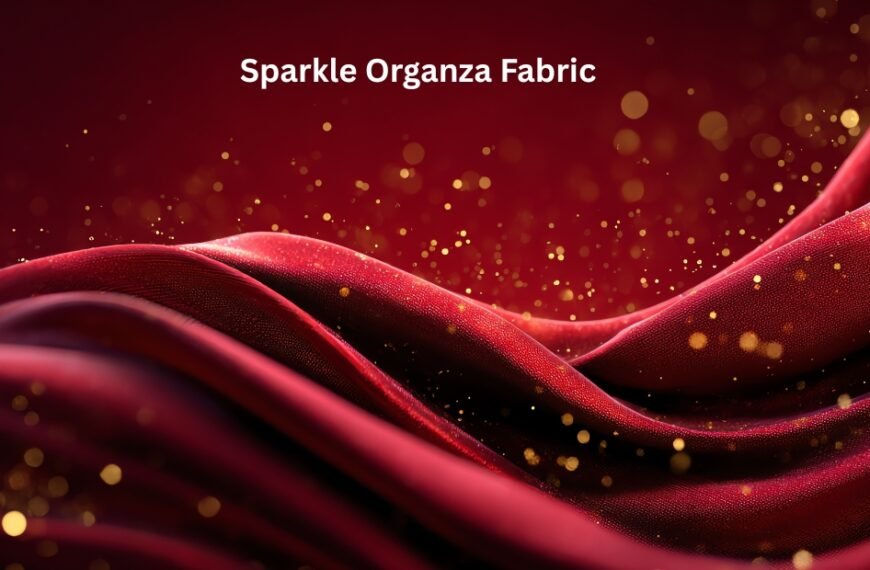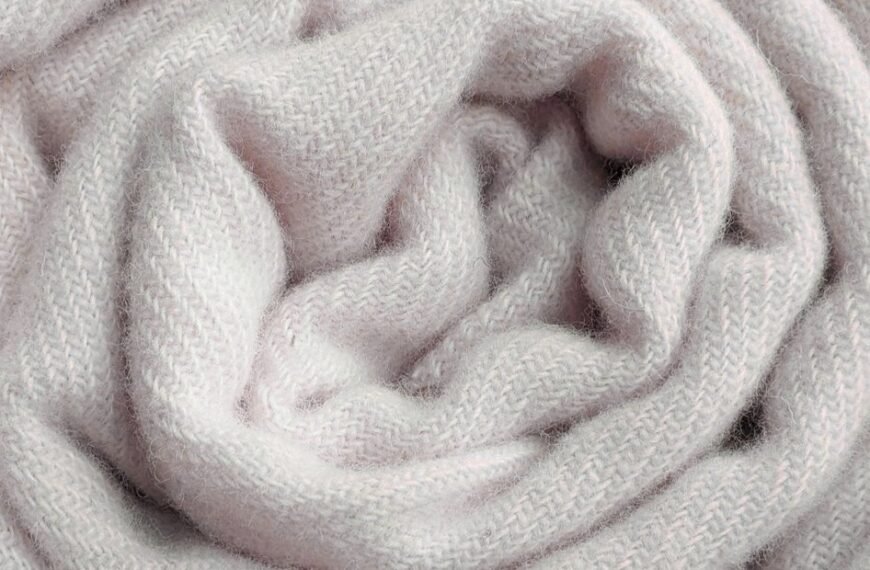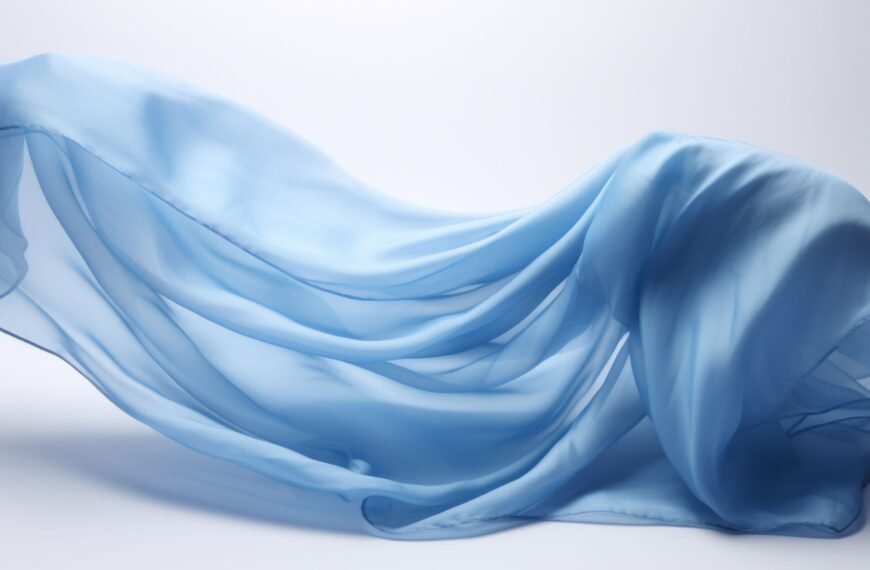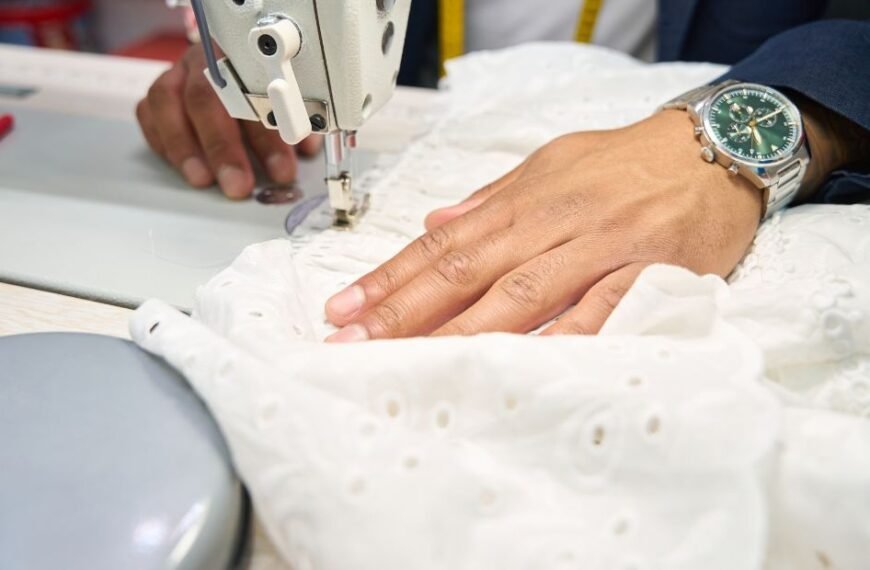Introduction
Cotton is a natural fabric that is quite popular in the world as it is comfortable and versatile. Not all cotton is, however, created equal. Among them, one of the types is Pima cotton, which is luxurious, durable, and extremely soft. It has been referred to as the cashmere of cotton due to its superior feel and longevity.what is pima cotton
Have you always wondered why Pima cotton is soft and lasts longer than ordinary cotton? The trick is on its extra-long fibers and quality cultivation process. Pima cotton is commonly applied in high-quality clothing and high-quality bedding due to its smooth and great strength properties.
As a sustainable and high-quality fabric has become more popular, it would be helpful to know what Pima cotton fabric actually is to make wiser choices when purchasing the textile. We shall discuss its meaning, origin, and its exclusive advantages that earn it a luxury of choice.
What Is Pima Cotton? Definition and Important Characteristics.
Pima cotton is a brand of extra-long staple (ELS) cotton that is recognized to be of high quality with respect to softness and durability.what is Pima cotton Pima is a term used to refer to a certain type of cotton plant (Gossypium barbadense), whose fibers are longer and more fine than a normal cotton. These fibers are long than 1.4 inches and are used in preparation of smooth and strong yarns.
This cotton is referred to as Pima Native American, as they assisted in its growing in the southwest of the United States in the early 1900s. Its characteristic properties are a smooth feel, low shine and pilling resistant nature.
Due to these qualities, Pima cotton fabric bathes the skin and does not deteriorate despite multiple washing.what is Pima cotton When someone tries to answer the question of what is Pima cotton, the answer is not very complex, it is a high-quality, long-staple cotton that is regarded as luxurious, strong, and comfortable.
Pima Cotton History and Origin.
Persons started with the story of Pima cotton thousands of years ago in Peru where the early civilizations cultivated extra-long staple cotton in coastal valleys. This type of cotton later made its way to Egypt where it later developed to become the famous Egyptian cotton in the world.
These long-staple cotton seeds were introduced into the U.S. in the early 20 th century by American scientists. what is Pima cottonThey also worked with the Pima tribe in Arizona that cultivated and refined the crop. So, the name Pima cotton was formed to depict high quality ELS cotton grown in America.
The three big manufacturers today are the United States, Peru and Australia. The climate of each area gives ideal growing conditions, i.e. warm temperatures and low humidity and fertile soil. The Peruvian Pima cotton is considered to be pure whereas the American Pima cotton is considered to be very consistent and strong.what is Pima cotton? The debate of Egyptian vs. Pima cotton continues to date but in most cases both have been regarded as the best varieties of cotton in the world.
Pima cotton How it’s made: Field to Fabric.
The manufacturing of the Pima cotton fabric is done through some very keen processes that maintain the high standard of the fibers.
- Cultivating and Harvesting: Pima cotton plants need warm weather and fertile soils. The cotton bolls are harvested either manually or with modern machines and make sure the fibers are not damaged.
- Ginning Process: The uncooked cotton is taken to ginning mills where seeds are extracted. The fibers are also longer and thus, Pima cotton has to be handled carefully to prevent its destruction.
- Spinning and Weaving: The refined fibers are reeled into thin and strong strands. These are then woven into fabrics which are smooth and lustrous.
Pima cotton is produced to preserve the fibre length and uniformity compared to the ordinary cotton. This leaves behind a resistant fraying fabric and a soft fabric even after years of usage.
Pima Cotton Characteristics and Benefits.
The beauty of Pima cotton is in the fact that this kind of cotton combines softness, strength, and elegance. The main features and advantages of it are listed below:
- Unequalled softness: The longer than extra fibers provide a smooth and silky skin-feel that feels soft on the skin.
- Extraordinary Fibrosis: Pima cotton is 2 times stronger than ordinary cotton that results in clothing and sheets being durable.
- Breathability: its natural fabrics permit airflow to make you cool in hot seasons.
- Retention of color: Pima cotton takes on dye intensively thus ensuring that colors are vivid and bright after numerous rinses.
- Pill Resistance: The long straight fibers do not form lint and retain a fresh appearance.
It is due to these reasons that Pima cotton fabric is used as a favorite in luxury shirts, soft T–shirts, and hotel-grade bedding. By opting to buy Pima, people opt to buy comfort, elegance, and durability.
Pima Cotton vs Regular Cotton: The Real Difference.
Even though they belong to the same family of plants, Pima cotton and regular cotton differ in length and quality of the fibre.
| Feature | Pima Cotton | Regular Cotton |
| Fiber Length | Extra-long (over 1.4 inches) | Short to medium (under 1 inch) |
| Softness | Very soft and silky | Coarser texture |
| Durability | Extremely strong | Wears out faster |
| Color Retention | Excellent | Fades over time |
| Cost | Higher | More affordable |
Pima cotton is smoother, stronger, and more luxurious than regular cotton. Although it costs more, its longevity often makes it more economical in the long run. Understanding this helps buyers appreciate what Pima cotton fabric truly represents — lasting comfort and elegance.
Pima vs Egyptian Cotton: The Contest of Luxury Fibers.
The Egyptian cotton and Pima cotton compete in the luxury cotton market and they are at the top of the cotton industry.what is Pima cotton? They have identical genetic background and structure of fibers.
Nonetheless, Egyptian cotton is mainly cultivated in the Nile river valley with Pima cotton being cultivated in the U.S., Peru, and Australia. Egyptian cotton is commonly hand-picked, which means ultimate softness, whereas Pima cotton can be guaranteed to maintain the same level of quality and is produced through new agriculture and high regulation.what is Pima cotton?
To the majority of the consumers, Pima cotton is available in a more accessible and affordable way without having to lose the luxury. The two fabrics offer comfort, durability, and sophistication, which has seen them serve as bedding and clothing.
Is Pima Cotton Worth It? The Value of True Quality
The question that lingers on the minds of many is whether Pima cotton is all it is being billed to be. The answer to this is a resounding yes – and the following are the reasons.
Pima, cotton garments and sheets have a very long service life compared to ordinary cotton. Even when they have been washed over the years, the material retains its shape and color. A Pima cotton T-shirt is soft and smooth as opposed to a regular cotton one that can be worn in no time.
It is rather expensive in the short term, however, its quality and comfortability justify the price. Pima cotton is one of the goods that blend performance and elegance in the best ways possible in the luxury fabrics industry.
Common Uses of Pima Cotton
The softness and strength of pima cotton has made the product useful in high-quality textile products. It can be used in some applications such as
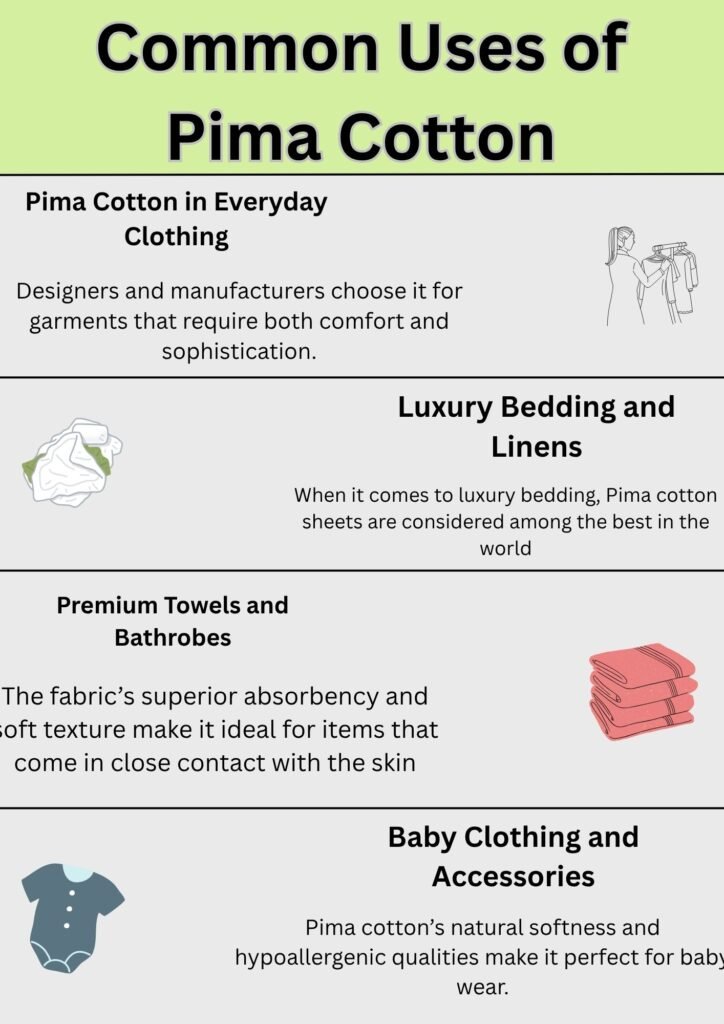
Pima Cotton in Everyday Clothing
One of the most popular uses of Pima cotton is in apparel. Designers and manufacturers choose it for garments that require both comfort and sophistication.
Luxury Bedding and Linens
When it comes to luxury bedding, Pima cotton sheets are considered among the best in the world. The fabric’s soft, silky feel creates a soothing sleeping experience, while its strength ensures the sheets remain smooth and intact over time.
Premium Towels and Bathrobes
Another major application of Pima cotton is in the production of luxurious towels and bathrobes. The fabric’s superior absorbency and soft texture make it ideal for items that come in close contact with the skin.
Baby Clothing and Accessories
Pima cotton’s natural softness and hypoallergenic qualities make it perfect for baby wear. Baby clothes, blankets, and swaddles made from Pima cotton provide gentle comfort without irritating delicate skin.
Pima Cotton Caring: Pima Cotton Care.
In order to maintain the quality and softness of your Pima cotton products, it is advisable to observe the following simple tips on how to care about them:
- Cleaning: Cold or lukewarm water and a mild detergent. Do not use bleach as it makes fibers weak.
- Drying: Dry or tumble dry on low-heat to avoid shrinkage.
- Ironing: When necessary, use a warm iron but not a hot one.
With proper care, your Pima cotton sheets, shirts and towels will last many years. Washing instructions are always put on the product labels to ensure that the fiber is not damaged.
Environmentally friendly nature of Pima Cotton.
Pima cotton has also received sustainability attention in the recent years. Pima products are durable and therefore need fewer replacements, which reduce waste in the textile. Organic Pima cotton that is grown in absence of harmful pesticides and chemicals is today available in many producers.
Moreover, the U.S and Peru farms tend to adhere to environment friendly irrigation and harvesting practices. Pima cotton is a sustainable source of clothing and home textile products due to its durability and natural composition. Sustainable cotton such as Pima is also a good option that can be chosen to ensure environmental protection and provide a long-term comfort.
Effects of Pima Cotton
Pima cotton has far-reaching effects that extend beyond comfort and softness. Its influence can be seen in how it transforms the textile industry, improves consumer experiences, and supports sustainability. Because of its premium quality, it creates lasting impacts on fashion, manufacturing, and the environment. Below are some of the key effects of Pima cotton that make it a valuable fiber worldwide.
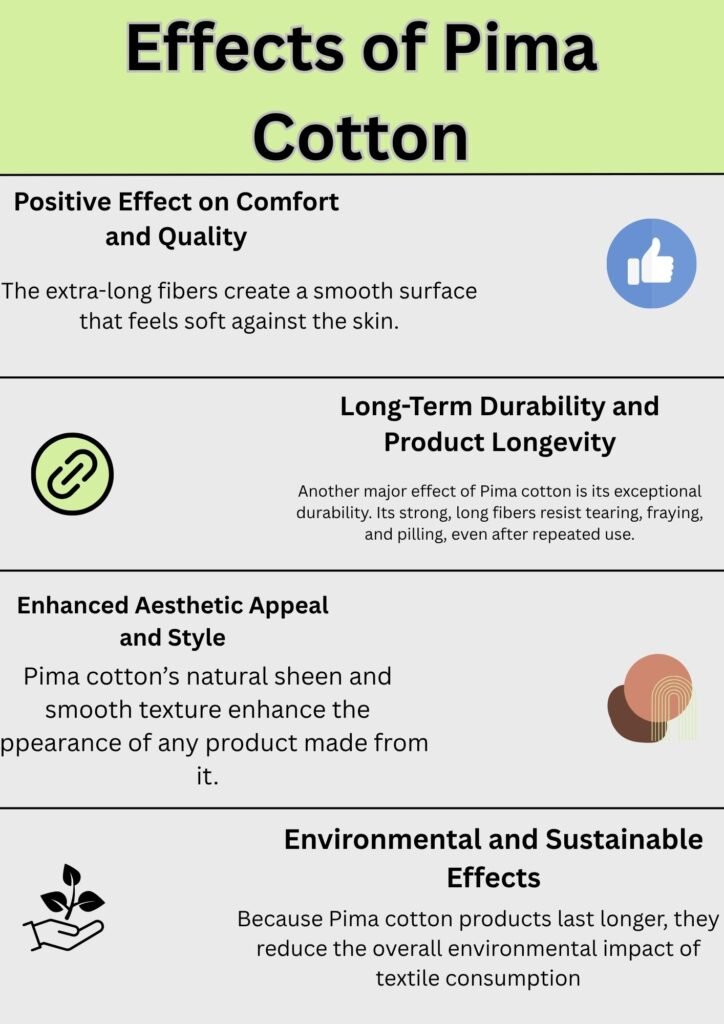
Positive Effect on Comfort and Quality
The most immediate effect of Pima cotton is its luxurious comfort. The extra-long fibers create a smooth surface that feels soft against the skin.
Long-Term Durability and Product Longevity
Another major effect of Pima cotton is its exceptional durability. Its strong, long fibers resist tearing, fraying, and pilling, even after repeated use.
Enhanced Aesthetic Appeal and Style
Pima cotton’s natural sheen and smooth texture enhance the appearance of any product made from it. Whether used in shirts, dresses, or bedding, the fabric maintains a crisp, elegant look.
Environmental and Sustainable Effects
Because Pima cotton products last longer, they reduce the overall environmental impact of textile consumption. Fewer replacements mean lower production demands, conserving water, energy, and raw materials.
Conclusion
So, what is Pima cotton really? It is not merely a blanket, but a symbol of warmth, quality and taste. Pima cotton is among the best of the fabrics in the present-day world due to its long fibers, superior softness, and strength.
It provides a long-term value and comfort that regular cotton cannot provide whether it be used in exquisite clothing, cushy bedding, or luxurious towels. Always look at labels when shopping, and make sure that the label says 100% Pima cotton, then you are sure that you are purchasing some quality, which will last long.
The fabric Pima cotton is one of the enduring fabrics in the world, and where contentment blends with enduring performance.
FAQs
Why is Pima cotton not like other cottons?
It has extra-long fibers, which are much soft, strong and have high color retention as opposed to regular cotton.
Is Pima cotton 100% cotton?
Pima cotton is of course all natural and pure cotton fibers.
Is Pima cotton suitable during hot weather?
Absolutely. Its breathable weave ensures that the body is cool and comfortable.
Does Pima cotton shrink?
It can slightly shrink when it is washed with hot water, and an adequate care can help to avoid its obvious shrinkage.
Is there better Pima cotton than Egyptian cotton?
They are both of the premium type, though Pima cotton has a more regular quality, and is generally cheaper.
